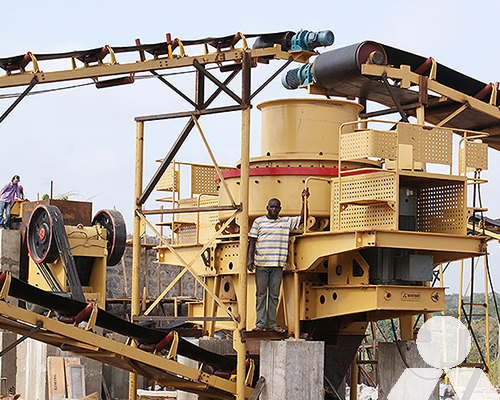500 tph basalt crushing plant drawing for roads
A 500 tph basalt crushing plant is a type of crushing plant that can process up to 500 tons of basalt per hour. This type of plant is typically used for the production of aggregate for roads and other construction projects.
The drawing for a 500 tph basalt crushing plant will typically include the following components:
- A primary crusher
- A secondary crusher
- A tertiary crusher
- A conveyor belt system
- A screening system
The primary crusher is typically a jaw crusher or a cone crusher. It is responsible for reducing the size of the basalt to a smaller size. The secondary crusher is typically a cone crusher or a hammer mill. It is responsible for further reducing the size of the basalt to the desired size. The tertiary crusher is typically a cone crusher or a roll crusher. It is responsible for producing the final size of the aggregate.

The conveyor belt system is responsible for transporting the basalt from one component of the plant to the next. The screening system is responsible for separating the aggregate into different sizes.
The drawing for a 500 tph basalt crushing plant will also include the following information:
- The dimensions of the plant
- The power requirements of the plant
- The operating costs of the plant
The drawing for a 500 tph basalt crushing plant is an important document that can be used to help you understand how the plant works and how to operate it safely and efficiently.
Here are some additional details about the components of a 500 tph basalt crushing plant:
Primary crusher
The primary crusher is the first component of the crushing plant. It is responsible for reducing the size of the basalt to a smaller size. The most common type of primary crusher for basalt is a jaw crusher. Jaw crushers work by squeezing the basalt between two jaws.
Secondary crusher
The secondary crusher is responsible for further reducing the size of the basalt to the desired size. The most common type of secondary crusher for basalt is a cone crusher. Cone crushers work by crushing the basalt between a concave and a convex surface.
Tertiary crusher
The tertiary crusher is responsible for producing the final size of the aggregate. The most common type of tertiary crusher for basalt is a cone crusher.
Conveyor belt system
The conveyor belt system is responsible for transporting the basalt from one component of the plant to the next. The conveyor belts are typically made of steel or rubber.
Screening system
The screening system is responsible for separating the aggregate into different sizes. The screens are typically made of metal or plastic.
Dimensions
The dimensions of a 500 tph basalt crushing plant will vary depending on the specific design of the plant. However, a typical 500 tph basalt crushing plant will be about 50 feet long, 30 feet wide, and 20 feet tall.
Power requirements
The power requirements of a 500 tph basalt crushing plant will also vary depending on the specific design of the plant. However, a typical 500 tph basalt crushing plant will require about 1,000 horsepower.
Operating costs
The operating costs of a 500 tph basalt crushing plant will include the cost of electricity, the cost of maintenance, and the cost of labor. The cost of electricity will be the largest operating cost. The cost of maintenance will vary depending on the frequency of maintenance required. The cost of labor will vary depending on the wages paid to the workers.









